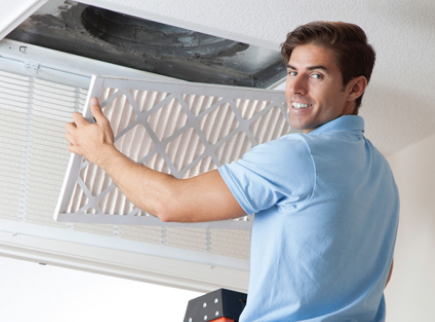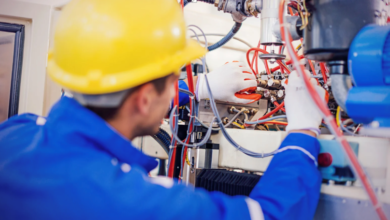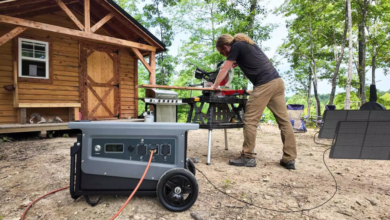
Why Regular Furnace and Duct Cleaning Improves Indoor Air Quality
Indoor air quality is one of the most overlooked aspects of a healthy home. We spend up to 90% of our time indoors, and much of that time is inside our homes, where the air may be two to five times more polluted than outdoor air. While factors such as ventilation, humidity, and household products all play roles in air quality, the condition of your HVAC system—especially the furnace and ductwork—has a direct and significant impact.
This article explores why regular furnace and duct cleaning is essential for improving indoor air quality, protecting your health, and extending the life of your heating and cooling system.
Understanding Furnace and Duct Systems
Your furnace and air ducts are at the heart of your home’s heating, ventilation, and air conditioning (HVAC) system. The furnace generates warm air in the colder months, while the ducts act as a highway, distributing heated or cooled air throughout the home.
Over time, dust, allergens, pet dander, mold spores, and even pests can accumulate in the ducts. Every time the furnace or AC runs, these contaminants are circulated into the living space. This means your family could be breathing in unwanted particles, leading to poor indoor air quality.
Why Air Ducts Get Dirty
Air ducts don’t just “magically” get dirty; several common factors contribute to the buildup inside them:
- Dust accumulation: Everyday household activities generate dust that gets pulled into return vents.
- Pet hair and dander: Homes with pets often see faster buildup in ducts.
- Moisture and mold: Small leaks or high humidity can cause condensation in ductwork, leading to mold growth.
- Pests: Rodents and insects sometimes nest in ducts, leaving droppings behind.
- Renovations or construction: Remodeling projects kick up sawdust, drywall debris, and other particles that settle in ducts.
When left unchecked, these contaminants accumulate layer upon layer, reducing airflow efficiency and polluting the air you breathe.
The Link Between Duct Cleaning and Indoor Air Quality
1. Reduction of Allergens and Irritants
Duct cleaning helps remove allergens like dust mites, pollen, and mold spores. For individuals with asthma, allergies, or respiratory conditions, clean ducts can mean fewer triggers and improved breathing comfort.
2. Prevention of Mold Spread
Mold spores thrive in damp, dark environments like air ducts. Once mold develops, every cycle of the HVAC system spreads spores into your living space. Regular cleaning, combined with controlling humidity, minimizes this risk.
3. Less Circulated Dust
Have you ever noticed that no matter how often you clean, a thin layer of dust always returns? Dirty ducts may be to blame. Regular cleaning prevents dust from recirculating throughout your home, reducing cleaning frequency and improving overall comfort.
4. Odor Removal
Foul smells from mold, pets, or even accumulated cooking grease can linger in duct systems. Cleaning eliminates these odor-trapping contaminants, leaving the air fresher and more pleasant.
5. Improved HVAC Efficiency
Clogged ducts force your furnace and air conditioner to work harder, which not only consumes more energy but also decreases system lifespan. A clean system runs more efficiently, delivering cleaner air at lower energy costs.
Health Benefits of Regular Furnace and Duct Cleaning
Poor indoor air quality has been linked to several health issues, from short-term irritations to long-term chronic conditions. Cleaning your furnace and ducts reduces the risk of:
- Respiratory irritation: Reduced dust and debris lessen throat and lung irritation.
- Allergy flare-ups: Fewer allergens circulating means fewer sneezing fits, itchy eyes, and sinus issues.
- Asthma attacks: Clean ducts decrease airborne triggers for asthma sufferers.
- Infections: Mold spores and bacteria can cause respiratory infections if inhaled regularly.
- Headaches and fatigue: Polluted indoor air can lead to chronic headaches and general fatigue, often mistaken for other issues.
For households with children, elderly family members, or anyone with compromised immune systems, clean indoor air is especially critical.
How Often Should You Clean Your Furnace and Ducts?
While there isn’t a one-size-fits-all answer, most experts recommend cleaning air ducts every 3 to 5 years. However, more frequent cleaning may be needed if:
- You have pets that shed heavily.
- Someone in the household suffers from severe allergies or asthma.
- You live in a dusty or humid climate.
- There’s been recent home construction or renovation.
- You notice visible mold, vermin, or debris blowing from vents.
Regular furnace maintenance, including filter changes and system checks, should be scheduled annually, even if duct cleaning is less frequent.
Signs That It’s Time to Schedule Cleaning
- Visible dust or debris blowing from registers.
- Unexplained musty or foul odors from vents.
- Reduced airflow or uneven heating/cooling.
- Increased allergy or respiratory issues among occupants.
- A sudden spike in energy bills.
Ignoring these signs can not only harm air quality but also strain your HVAC system, leading to costly repairs down the line.
The Professional Furnace and Duct Cleaning Process
Professional cleaners use specialized tools and vacuums designed to safely remove debris from ductwork. The process typically includes:
- Inspection: A technician examines ducts with cameras or scopes to identify buildup.
- Sealing and containment: Vents and registers are sealed to prevent mess.
- Vacuuming and brushing: High-powered vacuums and rotating brushes dislodge and remove debris.
- Sanitization: Antimicrobial treatments may be applied to eliminate bacteria or mold.
- Final testing: Airflow and cleanliness are rechecked before the job is complete.
This thorough process ensures contaminants are removed without releasing them into your living space.
DIY vs Professional Cleaning
While homeowners can replace filters and vacuum vent openings, duct cleaning requires professional-grade equipment. DIY attempts often push debris deeper into the system or fail to remove mold properly. Professionals ensure safe, thorough cleaning, reducing the chance of damage and improving results.
Complementary Steps to Improve Indoor Air Quality
Regular furnace and duct cleaning is only one part of a bigger indoor air quality strategy. Consider these additional steps:
- Replace air filters every 1–3 months.
- Use HEPA filters in vacuums and air purifiers.
- Maintain proper humidity (30–50%) to discourage mold growth.
- Ventilate your home by opening windows when possible.
- Schedule annual furnace tune-ups to maintain efficiency.
Together with duct cleaning, these practices create a healthier indoor environment.
Cost of Furnace and Duct Cleaning
The cost of professional duct cleaning varies depending on home size, number of ducts, and level of contamination. On average, homeowners can expect to pay between $300 and $700. While this may seem like an investment, the benefits—better health, lower energy bills, and a longer-lasting HVAC system—often outweigh the cost.
Environmental Benefits
Cleaner ducts don’t just improve your home environment—they also reduce energy consumption. By ensuring that air flows freely, your HVAC system requires less energy to heat or cool your home, lowering your carbon footprint and monthly utility bills.
Conclusion
Indoor air quality directly affects your family’s health, comfort, and overall well-being. Since your furnace and duct system is the backbone of your home’s airflow, keeping it clean is critical. Regular furnace and duct cleaning reduces allergens, prevents mold, eliminates odors, and supports efficient HVAC operation—all of which translate to cleaner, healthier air.
Think of duct cleaning not as a luxury, but as an essential part of responsible homeownership. Whether you’re in a busy city, a pet-filled household, or simply striving for better health, prioritizing clean air ducts ensures that every breath you take at home is fresher, cleaner, and safer.




